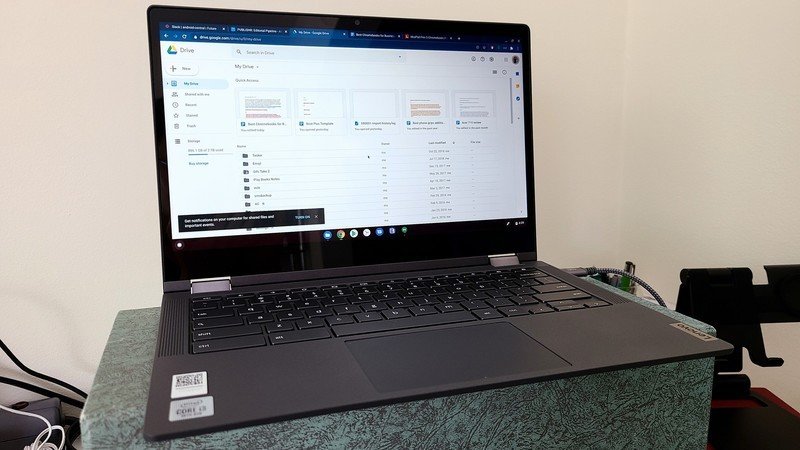How much storage do you need in a Chromebook?

Best answer: How much storage you need depends on how many apps you download and if you intend to use Linux. If you don't plan on using either, you can make do with 32GB of storage. However, I highly recommend getting 64GB or more of Chromebook storage so you have more room for offline files, downloaded media, and any apps you may start using the future.
Bigger is better, but how much Chromebook storage you need depends on you
While many of the best Chromebooks these days come with 64-256GB of storage, the vast majority of Chromebooks sold today still come with 32GB of storage, less than even most cheap phones. Less storage helps keep prices down on budget-minded laptops — this is important for school districts and Fortune 500 companies that buy tens of the thousands of Chromebooks at a time — but thanks to more stability for Android apps on Chromebooks and Linux support finally coming out of beta, storage levels are rising, especially for mid-range and premium Chromebooks.
Of course, you might not care at all about Linux or apps. You might just want a laptop that lets you get onto Chrome and on with your day. So long as you have room for your recent downloads, storage might not be a concern if most of what you do is in the cloud (like my work is). If this sounds like you, you probably could get a budget Chromebook with 32GB of storage and be alright with it — at least, for now.
If you're buying a student Chromebook, you're probably going to be stuck with 32GB as few ruggedized "Education Edition" models have 64GB storage, and those that do have difficulty keeping it in stock. This means you or your child might need to clear out the downloads folder every few months, but otherwise, you should be able to get by so long as there aren't too many games installed.
Here's why 64GB is worth the upgrade

Chrome OS adds new features every month, and new features inevitably add up to a larger size for the Chrome OS system itself. If you set up a 32GB Chromebook these days, you tend to have around 10GB of available storage after the system and the data associated with your Chromebook profile. 10GB is room enough to hold thousands of images, or a handful of videos, but it's much easier to run out than you'd imagine.
Get the latest news from Android Central, your trusted companion in the world of Android
Meanwhile, 64GB is the starter storage for most new mid-range and premium Chromebooks like the Lenovo Flex 5 and Acer Chromebook Spin 713 for this reason. Given that most Chromebooks do not have the option to upgrade the internal storage — and no matter how good microSD cards are, they can't be used for everything — and most new Chromebooks will get Chrome OS updates for the next 6-8 years, having enough storage for what you need now and what's down the road is important.
Another big reason to opt for at least 64GB of storage is so you can take advantage of Chrome OS's two app types: Linux apps that have to run in a sandboxed container on the internal storage and Android apps that can sometimes (but not always) use microSD storage. I don't use a lot of Android apps in my day-to-day — just Microsoft Solitaire Collection and an e-reading app — but I always keep Disney+ installed. If I'm taking a trip, I can quickly download the newest episodes and some old favorites to watch on the flight and in the airport lounge.
Linux apps offer up more robust applications for those used to Windows or Mac, but more local programs mean more local storage. In fact, some Enterprise features like Parallels for Chrome OS require 128GB of storage just to be sure they have enough room for the emulator and whatever Windows apps you install. So if you think you might want to play around a little more with your new laptop, get as much Chromebook storage as you reasonably can.

Plenty of storage and so much more.
Most Chromebooks under $350 only have 32GB, but the Lenovo Flex 5 sports 64GB storage, a 13.3-inch touchscreen, loud up-facing speakers, and a 10th Gen Intel Core i3 processor. This remains the best Chromebook on the market, especially with the recent price cuts
Ara Wagoner was a staff writer at Android Central. She themes phones and pokes YouTube Music with a stick. When she's not writing about cases, Chromebooks, or customization, she's wandering around Walt Disney World. If you see her without headphones, RUN. You can follow her on Twitter at @arawagco.

